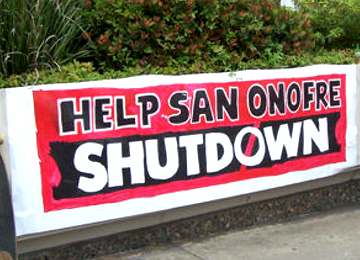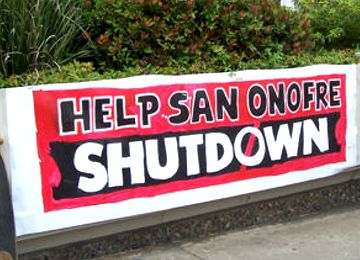

Harvey Wasserman

In the thick of the 1970s Arab oil embargo, Nixon said there’d be 1000 such reactors in the U.S. by the year 2000. As of today, there are 100. Four have shut here this year. Citizen activism has put the “nuclear renaissance” into full retreat.
Just two of 54 reactors now operate in Japan, where Fukushima has joined Chernobyl and Three Mile Island in permanently scarring us all. Germany is shutting its entire fleet and switching to renewables. France, once the poster child for the global reactor industry, is following suit. South Korea has just shut three due to fraudulent safety procedures. Massive demonstrations rage against reactors being built in India. Only the Koreans, Chinese and Russians remain at all serious about pushing ahead with this tragic technology.
Cheap gas has undercut the short-term market for expensive electricity generated by obsolete coal and nuke burners. But the vision of Solartopia—a totally green-powered Earth—is now our tangible long-term reality. With falling prices and soaring efficiency, every moving electron our species consumes will be generated by a solar panel, wind turbine, bio-fueled or geothermal generator, wave machine and their green siblings.
As of early this year, Southern California Edison’s path to a re-start at San Onofre seemed as clear as any to be expected by a traditional atomic tyrannosaur. But with help from Sen. Boxer (D-CA) and Senator-to-be Markey (D-MA), a powerful citizen uprising stopped it dead.
So did the terrifying incompetence and greed that has defined the nuclear industry from the days of Nixon and before. San Onofre Unit One shut in the 1990s due largely to steam generator problems. In the early 2000s, Units Two & Three needed new steam generators of their own. In the usual grasp for more profits, Edison chose untested, unlicensed new designs. But they failed. And the whole world was watching. In the wake of Fukushima, two more leaky tsunami-zone reactors surrounded by earthquake faults were massively unwelcome.
So a well-organized non-violent core of local, state and national activists and organizations rose up to stop the madness. At Vermont Yankee, Indian Point, Seabrook, Davis-Besse and dozens of other reactors around the U.S. and world, parallel opposition is escalating.
Make no mistake—this double victory at San Onofre is a falling domino. Had the public not fought back, those reactors would have been “fixed” at public expense. Today, they are dead. Worldwide, there are some 400 to go. Each of them—including the 100 remaining in the U.S.—could do apocalyptic damage. We still have our work cut out for us.
But a huge double-step has been taken up the road to Solartopia. There will be no Fukushimas at San Onofre. A green-powered Earth is that much closer. And we have yet another proof that citizen action makes all the difference in our world.
Visit EcoWatch’s ENERGY and NUCLEAR pages for more related news on this topic.
——–
Click here to tell Congress to Expedite Renewable Energy.

 233k
233k  41k
41k  Subscribe
Subscribe 

